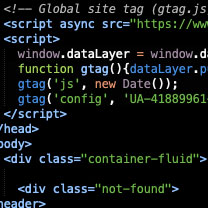BLOG

5 Tips to Communicating Delays in A Software Development Project
With every custom project, there are unknown hurdles or needs that can pop up while you’re in the middle of development. While some of these can be easily navigated and the project can be kept on time and budget, some cannot. There are several reasons that software development projects can be delayed: employee changes, technical hurdles, changes to the scope, business needs that were undiscussed, and probably a million other things we haven’t discovered yet.
Whether your project is for an internal team or an external client, you’re going to need to communicate with the team and the stakeholders about the delay in a timely and respectful manner. How do you do this while minimizing your clients’ frustration? We’ve got some top tips we’ve found can help:
Communicate As Soon As You Can
The longer you wait to explain a delay, the harder the conversation will be. Don’t wait to have the issue “figured out” before telling the client unless it can be resolved quickly. Take your time to understand the concern and devise a plan to communicate it to the stakeholders. Get them into the conversation as soon as you can - they may actually be part of the solution!
Have All the Facts You’ll Need to Give
When you consider when you want to alert the stakeholders to a delay, you want to understand what they need to know and what they don’t. For stakeholders that don’t understand software development, you may want to stay extremely high level by naming the reason for the delay and discussing the timeline to determine how it will affect the project. If you are speaking to someone who understands the nuances of coding, you may want to go with a few more details. Remember that the stakeholders are an important part of the overall project and by explaining elements of the delay, you may find a way to get past it sooner.
Don’t Place Blame on Any One Person
Don’t point fingers. Even if the delay is caused by a team member leaving the team or company, do not blame that individual. This is a common reason for a project to slow down. Simply discuss the reason for the delay and the new expected timelines. Move forward as a team without throwing anyone under the bus.
Give the New Project Timeline in the First Conversation (or at least an estimate)
The most important thing to communicate is the timeline for getting past or coping with the delay. If you are losing a team member and slowing down your velocity, then have the expected velocity mapped out to explain to the client how the change will affect the deadlines. If you have found a bug in a past release, explain how long it will take to fix it. If you don’t know how to fix it, explain the amount of time you’ll allocate to determining it. Remember that you’re client will most likely understand delays happen, but showing your professionalism and commitment through communication can really help to de-stress a situation, giving the client confidence in your team.
Stay Positive to Keep Your Team & Client Positive
We cannot stress this tip enough - stay positive. If the leader of the team (or other team members) is discouraged that emotion will be projected to the rest of the team. It will be a snowball effect and you will have a team morale issue. While some delays are extremely hard to cope with, always take the angle of learning and progress. Two steps back four steps forward.
YOU MAY ALSO LIKE

Aug 28, 2021 - By Jerry E.
A Championship Mobile Application: A Case Study

Apr 24, 2020 - By Jon A.
Tips for Conducting Virtual Meetings


